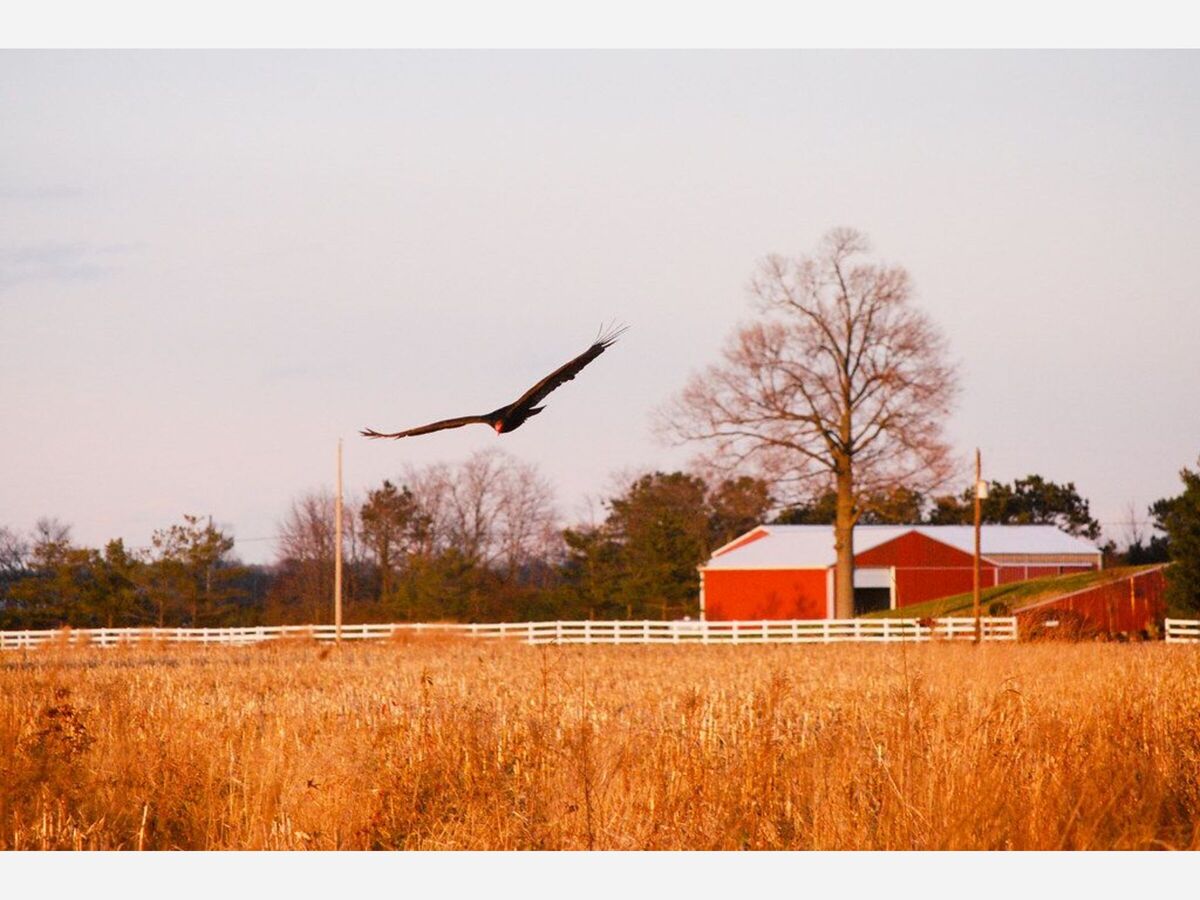Image

phot MATT RATH, CHESAEAKE BAY PROGRAM
Turkey vultures are large scavengers that are commonly seen soaring above roads as they look for carrion.
Turkey vultures are large birds with an average wingspan of 65 to 70 inches. When flying, turkey vultures form a “V” by holding their wings higher than the rest of their body. Their body is mostly covered in dark brown feathers with the exception of their featherless red head and a tan band of feathers that extends from their wingtip to their body.
Turkey vultures are scavengers that find carrion (the decaying flesh of dead animals) with their strong sense of smell. They prefer fresh meat over old meat but can eat both. They will occasionally feed on vegetable matter, insects and fish.
Turkey vultures are most vulnerable when they have first hatched. Larger birds of prey, raccoons and opossums might attack them at this stage. When threatened, turkey vultures will projectile vomit their incredibly acidic stomach contents.
Turkey vultures often wobble as they fly with their wings open. They take very few wingbeats and soar on thermal currents, which are essentially hot pockets of air that propel the bird.
Turkey vultures lack a voice box. When they make noise they hiss and grunt.
Turkey vultures do not create nests. Instead, they lay their eggs on rocky surfaces and tree cavities. Turkey vultures will lay one to three eggs. Both parents will incubate the eggs. After the chicks hatch, both parents will feed them by regurgitation.
● National Audubon Society - Turkey Vulture
● All About Birds - Turkey Vulture
● Maryland DNR - Turkey Vulture
Native
Turkey vultures are common in many different habitats including forests and agricultural areas.
Turkey vultures are common year-round in the southern United States. They can be found in the northern United States during the breeding season.
Turkey vultures live for up to 15 years in the wild.